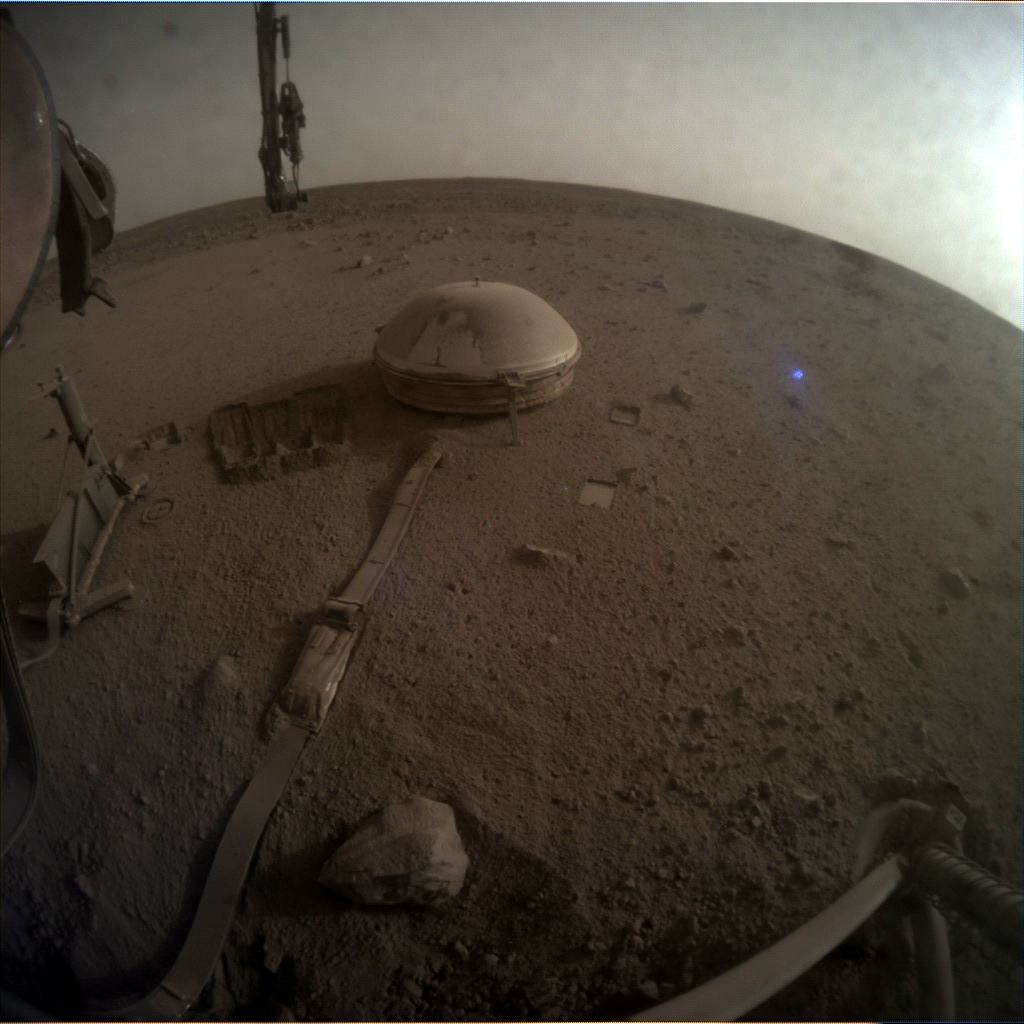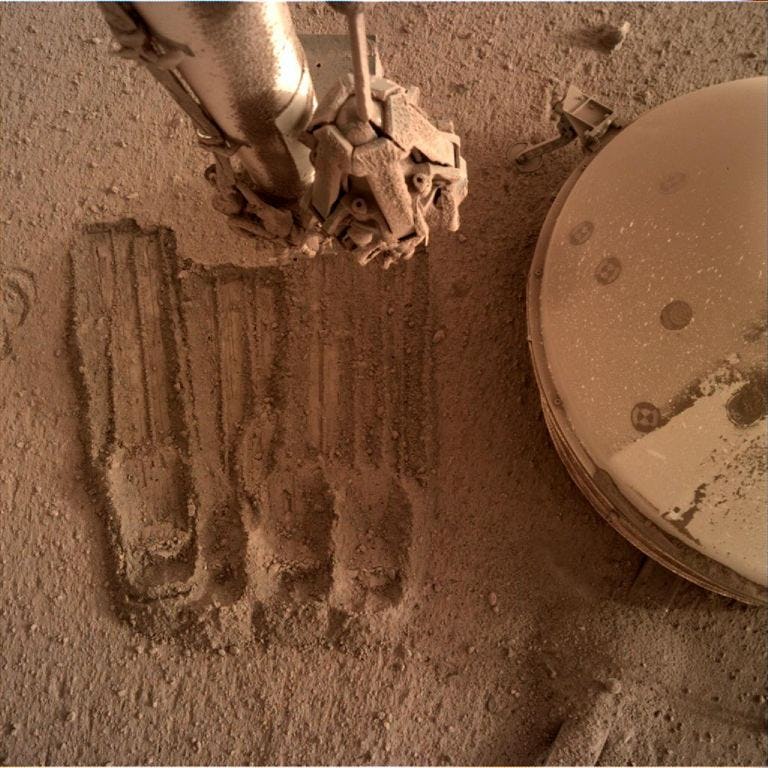
It’s almost time to say goodbye to another Martian friend. Plenty of missions to the Red Planet have gone silent for the last time, some after many successful years of data collection and some after a brief free-fall as a fireball. We will soon add another Martian explorer to that ever-growing list — InSight might have sent its final image home.
The image itself is similar to hundreds of others that the probe has been sending back to Earth for the last four years. In the center of the image is the craft’s seismometer, which has been focusing on collecting data about Marquakes and whose data has been used in dozens of papers. In this image, though, it is noticeably covered in the fine red dust that blankets everything on the Red Planet.
Here is the image, captured on November 6, 2022:

That dust is also covering InSight’s power source. Its solar panels have been getting collectively more covered and, therefore, able to provide less and less power to the lander itself. Unfortunately, InSight also had the good or bad luck to be located in an area of general calm for Martian dust devils. While they might be difficult for the instruments themselves to handle while they are happening, dust devils also do a remarkably good job at cleaning off solar panels covered in dust.
Another fact in the growing dust accumulation was a design decision the InSight team made back at the project’s inception. Various methods can help remove dust from solar panels. Compressed air and wiper blades similar to those found on cars are two of the most common. But InSight’s engineers decided not to include any such system on their probe.

Making those kinds of decisions is one of the hardest parts of engineering. Dust removal systems add weight and therefore cost more money, both in their design and getting them to Mars. Launch costs still take up a significant amount of a project’s budget, so every system is scrutinized to see whether it is truly necessary. In the case of Insight, the team determined a dust removal system was not.
There was one crucial factor that led to that decision — the relatively short expected mission duration of Insight as a whole. It was only planned to last one Earth year. It ended up lasting four.
What’s next for InSight
Even without a dust removal system, the mission outperformed its original expectations. And Insight has solidified its standing as one of the most prolific Martian probes up to this point. Its data has been the basis of dozens of papers, and we have come to understand everything from the presence (or lack therefore) of liquid water around the lander to finding some magma in the same area.
Such data would make any scientific team proud, and those involved with Insight have had plenty of time to see the end coming. UT first reported on its power problems back in May. But, while it has continued going strong for the last six months, it might soon be time to say a final goodbye to Interior Exploration using Seismic Investigations, Geodesy, and Heat Transport missions. It will not be forgotten and might even be brought back to life someday when humans finally tread on the landscape that so far only it has seen.
This article was originally published on Universe Today by Andy Tomaswick. Read the original article here.







